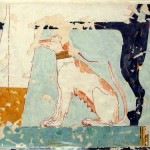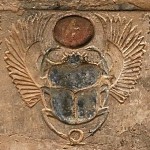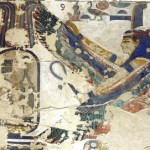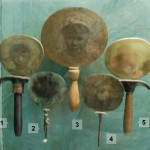
An Introduction to The Coptic Period in Egypt. The Early Christian era 1st Century AD – 7th Century AD
By Howard Middleton-Jones. Published on Egyptological, Magazine Edition 3, December 7th 2011. First in an occasional series about Coptic heritage by Howard Middleton-Jones. Introduction The Middle East is a region of remarkable achievements, captured in literature from the 19th century onwards, often expressed in superlative terms. Readers will be familiar with the ‘Cradle of […] [more…]
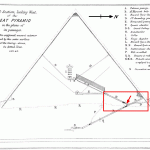
The Granite Plugs of the Great Pyramid
The Great Pyramid on the Giza plateau at the apex of the Nile delta is one of the oldest and largest and yet perhaps the most enigmatic manmade structure in recorded history. Egyptologists have determined that it was commissioned by the pharaoh Khufu in the 4th Dynasty of the Old Kingdom to be his royal tomb. Figure 1 shows a vertical cross section indicating the main passages and chambers. However, within these passages and chambers are many elements of construction that are difficult to explain within the context of a royal tomb. This article focuses on one such enigma: the set of three massive granite blocks that plug the lower end of the Ascending Passage. [more…]
Libyan Desert Glass and the Breast Ornament of Tutankhamen
One of the many fabulous items in the jewellery collection from the tomb of Tutankhamen is a breast ornament. A highly decorative piece in the form of a winged scarab, dating to around 1330 BCE, it is currently on display in the Egyptian Museum in Cairo (JE 61884; Burton Photo No. P1133; Carter No. 267d). Adorned with silver, semi-precious stones and glass paste, all set into gold, the eye-catching centrepiece is a semi-translucent green scarab. Remarkable for its beauty, the pectoral has the added interest of scientific and archaeological mysteries that have yet to be completely unraveled. [more…]
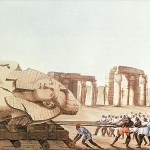
In Defense of Belzoni
The early explorers of Egypt, often associated with ideas of adventure, discovery and buried treasure, fascinate many people interested in the earliest days of Egyptology. No name elicits a stronger, and often negative reaction from scholars than that of Giovanni Belzoni, who explored Egypt in the early 1800s. Belzoni has often been depicted as a villain, an irresponsible treasure hunter who destroyed valuable antiquities as he blazed through Egypt in a search for gold. It is this image of Belzoni that forms many people’s preconceptions. [more…]
Bloggers, Antiquities and Egypt’s Revolution
In the last week of March 2011 an UNESCO team visited Egypt to meet with the new Minister of Culture and try to understand the state of the country’s antiquities following widespread reports of vandalism, theft and looting. Egypt has seven World Heritage Sites: six cultural heritage sites and the fossilized mangroves of the Faiyum’s Whale Valley. [more…]
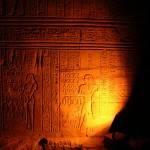
 By
By 